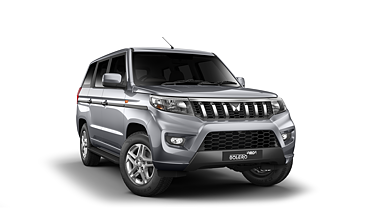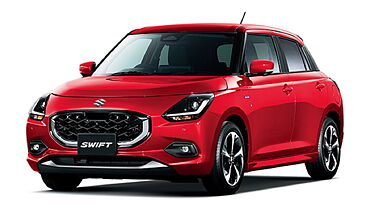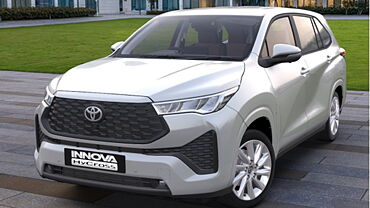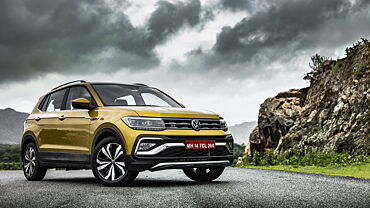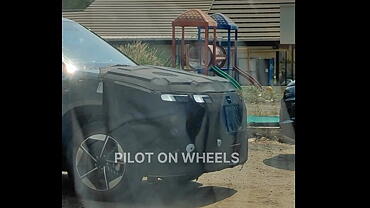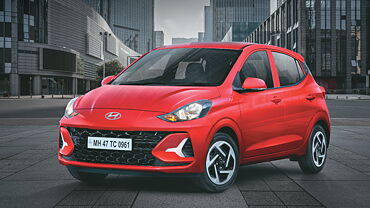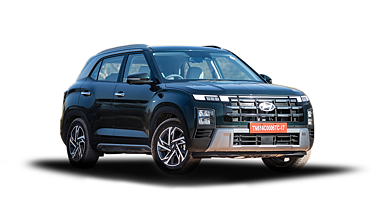FAQ’s on Traffic Rules and Regulations
Introduction
The progress of any nation is indicated by the development of its transportation system. With the fast growing vehicle population of the nation, there is rapid increase in traffic problems. Particularly in city conditions, traffic violations are a common occurrence and more so a hindrance to daily life. Hence there is an increased in requirement of tougher traffic control systems. Frequently asked questions such as did I pay fine amount to right person? Was the amount collected as per rule? How do I know if I was wrong? Etc are regular doubts that the common man has in his mind.
The sole intention of providing authoritative guidelines and awareness of traffic system to the public is what has driven us extract points from FAQ sections of government traffic control system website. Although this article is referenced from a particular city traffic police website, there are a lot of common points that are applicable to almost all cities and is edited suitably to serve as pan India information. It is our sincere request to check official traffic police website of your city for particulars like penalty fee etc.
What documents should a driver carry when driving?
• Driving license / Registration certificate
• Taxation Certificate
• Emission Test Certificate
• Insurance Certificate
• Fitness Certificate & Permit (in case of transport vehicles)
Who is authorized to collect the traffic fine on the spot?
Any traffic branch officer of and above the rank of Assistant Sub-Inspector of Police duly authorized with a receipt book.
I have recieved a notice from the Traffic Enforcement Automation Centre? What shall I do?
You can pay the fine at the Enforcement Automation Centre, or at any of the Traffic Police Stations in your city. You can also pay the fine at any of the Government official bill payment centers as per your convenience.
What is the rule regarding seat belts? Is it binding using seat belts while driving in interior areas or bylanes?
The driver and the person seated in the front seat must wear the seat belts while vehicle is in motion ( U/S 138 CMVR r/w 177 MVA).
What is the rule for use of mobile phone?
As per section 250 (A) MMVR, r/w 177 M.V.Act, no driver while driving or riding a motor vehicle (including two wheelers) can use a mobile phone.
Can other occupants of the motor vehicle use a mobile phone?
Yes. Other than driver, occupants of the motor vehicle can use mobile phone
If I am a doctor; can I use my mobile phone in an emergency while driving?
No. Exemption is not given to anyone in the M.V Act or Rules regarding this. You can stop the vehicle and then take a call.
What are the duties of a driver when his vehicle is involved in an accident resulting in death/bodily injury/damage to property?
The duties are as under:
. Arrange for medical help Inform the police
. In case the vehicle is carrying dangerous goods, keep everyone away, avoid smoking in the vicinity and take emergency action as displayed on the vehicle.
Under what conditions is the towing of a vehicle allowed?
Vehicle abandoned or left unattended or Parked in a parking restricted zone or Parked in a way causing inconvenience to other road user(s) can be towed away.
What is the punishment for drunken driving/driving under the influence of any drug?
If a driver is caught driving a vehicle with alcohol in his blood exceeding 30 mg per 100 ml or he is under the influence of a drug to such an extent that he is incapable of exercising proper control over the vehicle, the following will be the punishments. First Offence: Imprisonment up to 6 months or fine up to Rs 2,000 or both Subsequent Offence: Imprisonment up to 2 years or fine up to Rs 3,000 or both
When can the conerned authorities detain a vehicle?
Authorities can detain a vehicle in the following circumstances:
• Vehicle being driven by an individual without valid driving license
• Vehicle being driven without registration
• Transport vehicle being driven without Permit
• Vehicle being driven without payment of Tax
What are the consequences for driving without a license?
You will be fined Rs.300/-
Is wearing helmet compulsory for Scooter and Motorcycle riders?
Yes. Wearing helmet is compulsory. Violators will be charged U/sec.177 of M.V.Act-1988 for which fine is Rs.100/-
What are consequences of driving under the influence of liquor?
If you are caught driving under the influence of liquor you will be issued a police notice for for the appearance in the Court. There is no provision of paying the fine on the spot. Moreover, you will not be allowed to continue to driving unless you have a partner who is not under the the influence of liquor and has a valid driving licence.
You will be advised to hire a cab leaving the vehicle in the police station under acknowledgement till you apear in the court and pay the fine. Your driving licence will also be kept with the police till the disposal of the case.
You are reminded that on repeat offence of driving under the influence of liquor, there is a provision for enhanced penalty and imprisonment. If you commit a fatal accident under the influence of liquor you could be booked under culpable homicide not amounting to murder which is a non-bailable offence.
What document am I expected to carry?
You are expected to carry original Driving license, RC book and Insurance certificate; all these documents should be carried in original or Smart card form. In addition transport vehicles like bus, taxi and auto rickshaws are expected to carry permit and fitness certificate. These documents should be produced for inspection if asked for by the police officer.
Can I avoid carrying all these documents?
Yes. As per rule 87 (5) of Karnataka Motor Vehicle Rules, there is a provision of getting MASTER PASS for two/three/four wheelers from RTO which is a proof that the driver has all valid documents i.e. certificate of registration, taxation card, insurance certificate and driving license. In case one is carrying Master Pass he need not carry above documents. For transport vehicles like buses and lorry etc SPEED PASS can be obtained from RTO which is a proof that one has valid registration certificate, taxation card, fitness certificate, insurance certificate and permit etc. In case one is carrying Speed Pass he need not carry above documents.
Who can receive payment of spot fine?
Only Asst. Sub-Inspector (one star), Police Sub-Inspector (two star) and Police Inspector (three star) are authorized to receive payments against violation and issue a receipt. No Police Constable or head constable can issue a receipt and therefore receive a payment. They can however record the violations on the basis of which violation ticket will follow. This ticket can be settled at any of the traffic police stations or Government official bill payment centers. In case a Constable or Head Constable threatens you with spot fine, insist on getting receipt and the chances are that he will let you go because he is not authorized to issue a receipt or receive money.
What is the spot fine for drunken driving?
There is no spot fine for drunken driving. In each of the drunken driving case, police notice is issued asking the person to appear before the court. Only court is empowered to impose the fine.
What happens if I don’t appear in the court?
If you fail to appear in court, warrant will be issued from the court. This may lead to arrest and stiffer penalty.
What is the punishment for drunken driving?
In the first instance there can be penalty up to Rs.3000/- which may extend to imprisonment in subsequent offence.
After being booked for drunken driving can I continue to drive myself?
No. you will have to arrange for an alternate driver who is not drunk or take a cab leaving the vehicle in the police station which will be released after you have settled the case in the court.
What about pollution check?
It is mandatory to carry emission certificate. However, police have been instructed not to stop any motorists for merely checking emission certificate.
Can police penalize vehicles with number plate of other State?
No. police is not authorized to penalize any one for out Station number plates. This is not the mandate for police.
Why have I received a violation ticket for the vehicle which I have already sold?
Notices are generated by computers picking up address from transport department records. The very fact you have received a notice means that vehicle continues to be on your name in the records even though you might have sold it. Selling the vehicle without insisting on change of ownership is a very dangerous practice. Signing a delivery note is no guarantee of change of ownership. You have to insist on buyer registering the vehicle in his name, failing which you have to get it done yourself at RTO. Unless you do so, you will continue to receive violation notices. Still worse can happen if the vehicle is involved in a fatal accident or terrorist activity. You will have to suffer the consequences.
My vehicle got damaged in an accident. Police did not help me in getting compensation!
Insurance company and not the police can get you the damages. Police will only prosecute the accused for criminal negligence in the court of law.
I crossed the stop line seeing green signal. But traffic in front of me was not moving and I got penalized.
Even if signal is green you should not enter the junction unless the tail of the traffic in front of you is moving. Otherwise you will create gridlock and block cross traffic too.
I crossed stop line before the signal turning red, while it was still yellow. But I could not clear the junction due to congestion ahead. Why was I fined for signal jumping?
Yellow signal is provided only for those vehicles which have already crossed stop line to clear the junction. You are not expected to enter the junction when the green light has already changed to yellow.
Why are junctions painted cris-cross in the center?
Cris-Cross marking indicates “no standing”. Unless one is sure of clearing the junction, he should not enter the junction even if the signal light is green, because it will block the cross traffic and lead to grid-lock.
I don’t see speed limit boards in the city?
As per notification, speed limit in entire city corporation limit is 50 kmph for LMV and 40 kmph for HMV. It is not possible to put boards all over 4000 km road length in city. Only where we have lower permissible speed like flyovers/narrow stretches / bends or higher permissible limits (Devanahalli road, Mysore Road and Ring Roadsetc) these boards are put. This is the practice world over.
I got fined for parking violation. But board was at least 20 m away from where I parked?
It is not possible to put one board for each vehicle. “No parking” is notified by gazette notifications and then boards are erected. Each board indicates that roughly 50 m each side of boards is no-parking area. That is why boards are put 100 m apart.
Why do traffic police switch off the lights during peak hours?
Actually it is not a good practice but is inevitable due to inadequate capacity of junctions. There are the situation when road is not able to take the entire volume of traffic and tail of traffic ahead does not get cleared even till next green phase. Now if the lights are not switched off, vehicles will block the junction and make it impossible for even cross traffic to move thus creating a grid-lock. It is lose-lose situation for all. At this juncture policemen take over the signal and regulate it according to clearance and relative volume. However, this practice is largely reduced and will disappear soon due to increased capacity of roads and junctions. Switching off also becomes inevitable during acts of nature like water logging, cracks in road and man-made situations like strikes, rasta-rokho and VIP movement, when one or more roads become unavailable for traffic. In all such situations manual operations are resorted to. This practice is, however not encouraged.
Among traffic officers, who is authorized to give a spot fine notice?
Traffic officers of and above the rank of assistant sub-inspector are authorized to give away traffic violation challans or notices, which are for spot fines. Officers of the rank of ASI (one-star), sub-inspector (two-star), inspector (three-star) are authorized to collect spot fines. Any officer below the rank of ASI, which comprises constables and head constables, can only note down the nature of violation and vehicle number, and submit the information to the traffic enforcement automation centre. Notices will then be issued from the centre. The violator will have to pay the fine at the jurisdictional police station, the nearest Government official bill payment centers or through the traffic police website. Traffic constables are not authorized to collect money as they do not carry receipt books. The motorist may lodge a complaint if any officer below the rank of ASI collects money from him.
I don't want to pay spot fine. What is the other option?
If a violation refuses or does not want to pay a spot fine, he would be required to surrender his original driving licence - for which the officer concerned would give an acknowledgement. He can walk into the police station within a week pay the fine and get the DL back or the case will go to court, and the offender will have to go by the decision taken by it. In the absence of an original driving licence, the person will have to leave the vehicle with the police. If the motorist fails to appear in court, a warrant will be issued and he will have to face arrest or stiffer penalties.
What are the documents one must carry while driving a vehicle?
A motorist has to carry the original driving licence and insurance certificate. Photocopies of documents won't be valid during police inspection after a violation has been committed. However, if a motorist doesn't want to carry his originals with him all the time, he can obtain a master pass from the nearest RTO. It can be obtained through the production of the certificate of registration, taxation card, insurance and driving licence. Once you have the master card, there is no need to carry other documents.
If a motorist is stopped by a traffic policeman only for checking his documents, what step should he take?
As per an order given to all traffic policemen, they are not supposed to stop any motorist just for checking documents. The motorist has the right to refuse the officer's request. However, a motorist's documents can be checked if he has committed an offence. If a motorist has been stopped without reason, he can note down the name and rank of the police officer and lodge a complaint on the traffic police website and would be required to mention certain specific details, such as the place, time and name of the officer concerned, for us to take action. We do receive complaints of the kind from motorists, and we have taken action against guilty police officers - some of whom have even been suspended for violating the order. However, when motorists who have violated traffic rules are stopped, they should not argue with the officers concerned.
When can a motorist be charged with drunk driving? What is the procedure for paying the fine?
A motorist caught driving under the influence of liquor beyond permissible limit is liable to be charged with the offence of drunken driving. Legal permissible limit is 30mg of alcohol per 100ml of blood. Traffic police uses state of the art alco-meters (breath analyzers) accepted worldwide to measure the level of alcohol in blood. This is scientifically and legally accepted method all over the world. Our instruments are calibrated once in three months with a probable error of +(-) 5%. Therefore, we do not panelize anyone below 40mg per 100ml of blood even though legal limit is only 30. Anyone driving with alcohol level below a reading of 40 is not, repeat not, liable for prosecution.
However, everyone need not be subjected to measurement. Merely, by bringing the instruments close to mouth and asking name of the person indicates preliminary result whether the person has consumed alcohol are not. If the result is negative, no measurement is required and person is allowed to go. If the result is positive, measurement is done using the disposable straw and reading printed using connected printers. Subsequently, the Blackberry generated police notice is given to the motorists. No one can be prosecuted without a computerized print out indicating reading and a Blackberry print out of mentioning that reading.
However, there is no spot fine for drunk driving. No police officer is allowed to collect spot fines for this offence. The person will be given a notice, will be sent to the court and the offender will have to pay a fine there. The punishment for drunk driving is six month’s imprisonment or payment of a fine up to Rs.2,000/- or both. If the offender is caught committing the offence a second time, he will have to face imprisonment of two years or a fine up to Rs.3,000 or both.
After being issued a notice, the motorist will not be allowed to drive. He will have to leave his vehicle behind and take a cab home or call a friend or relative to drive him home. In case he wants to take the vehicle using the another person who is not drunk but is free to do so after leaving his original driving license and RC book under acknowledgement with the police officer. Very often, motorists try to avoid legal proceedings by bribing the police officers concerned. However, the best thing to do in such circumstances is to follow the proper procedures and not resort to corruption. Moreover, if a person continues to drive under the influence of alcohol and gets involved in a fatal accident, he will be booked for culpable homicide – which is a non-bailable offence.
How do I know how much can I drink to remain within permissible limit?
There is no hard and fast rule as it depends on the body constitution, gender, whether; liquor is taken on empty stomach or with the food or the duration over which liquor the consumed. Generally one bottle of beer / 30ml Whisky / Rum will keep the person below the permissible limit of 30 units. However, our metabolism burns about 10 units in an hour. And therefore, larger quantity consumed over longer duration will still keep the person within permissible limits. However, these measures are indicative in nature.
How do I know that the straw is not being re-used?
We have strict instructions to use disposable straw. You can insist on fresh straw to be taken out in front of you and destroy the straw after you have used it. One is also free to carry his own straw.
Can motorists use mobile phones while driving?
Motorists cannot use mobile phones while driving vehicles and that includes two-wheelers. There are no exceptions to this rule, not even doctors. If it's an emergency, the driver can park the vehicle on the side of the road and take the call.
When people are involved in an accident, or are witness to one, what should they do?
If a motorist has caused the accident, he should arrange for medical aid and inform the police immediately. If a person is witness to an accident, he should help the victim and note down the details of the accused person before informing the police. Witnesses should not torch vehicles or indulge in anti-social activities. The public should be pro-active, not destructive.
Why doesn’t traffic police penalize government bus drivers for violations?
It is not true to say that government buses are exempted from traffic enforcement and that only two wheeler drivers are penalized. Firstly, as against 23 lakh two wheelers, there are only 6000 CITY buses (BMTC buses in particular) and hence enforcement of two wheelers is more visible due to sheer numbers. Statistically, whereas two-wheelers constitute 73% of the total vehicle composition, the cases booked against two-wheelers are only 41% of the total cases. Secondly, the mode of penalizing buses is different from that of two wheelers. For traffic violation done by Govt City bus driver it will be extremely unfair to make 60 passengers suffer by delaying them. Moreover, stopping a Govt City bus even for five minutes can create huge traffic jam and chaos which will take hours to clear. Hence, Govt City buses are not stopped on the roads and instead the violations are noted and notices sent to the Depot Managers who recover the fine from their salary and deposit with traffic police. For the general information, in the year 2009, during first 10 months Rs.27 lakh was recovered from BMTC bus drivers alone as fine amount.
Does traffic police has any targets for collection of fine?
Ideally our target for fine collection should be zero since ultimate objective is to see that no one violates the traffic rules. We are neither a revenue earning department nor the amount collected has any correlation to departmental budget. Fine collected goes to the general revenue of the government. The fact that strict enforcement resulted in more than Rs.35 crore in 2009 is not a matter of pride for the department but the matter of shame and concern for all of us. We will be happy with fine collection going down if people were to follow rules. Unfortunately traffic violations are rampant especially when police men are not present.
Why do policemen catch the people jumping the signal? Why can’t they stand on the junction so that no one jumps the signal?
All over the world when one installs signals policemen are removed totally as people follow the signals themselves even at mid night. The scenario in our society is quite opposite. Red means stop, if the policeman is there; red means nothing if policeman is not there. This is a sad reflection on our value system. Ideally, we would like to remove these police-men from the signalized junctions and re-deploy them in the residential areas which are totally neglected. However, in the absence of self regulation this appears to be the distant dream. Traffic police catches people because they jump signals. Motorists should follow rules irrespective of presence and absence of police men. In the absence of sustainable attitudinal change, enforcement is the only deterrence against indiscipline on roads.
Why do traffic police catch vehicles for over speeding even when road is empty? Why do they put a speed limit?
Roads are not only for motorists but for all other road users including pedestrians who have to co-exist. Empty road is not a license to speed without limit because driver cannot always anticipate sudden entry of some other road users. Roads are designed for a particular speed from safety point of view. Driving responsibly is an essential part of defensive driving which should take into account mistakes likely to be committed by other road users. Most of our roads pass through residential and commercial areas where sudden intrusions cannot be ruled out. Speed limits are essential for defensive driving.
Why do we need signals ?
To avoid chaos and gridlocks, we need to regulate traffic. Rotaries are space sharing devices where traffic from each direction merges, goes around the circle and weaves out. However, rotaries cannot function when PCU (a measure of vehicle density) exceeds 5000. Also rotaries require better discipline and awareness of rules regarding right of way on the part of road users.
Beyond 5000 PCU we require signals which are time sharing devices; allowing one stream of traffic at a time to avoid any merging, weaving and conflict. However, beyond 10,000 PCU, even signals become unmanageable due to abnormal increase in cycle time. We can still continue up to 12000 PCU by restricting few turning movements. Beyond 12000 PCU a grade separator is compulsorily required. Grade separators share space vertically and are the best solution for handling a junction with high PCU.
Signals are essential part of traffic management in any city. It is neither feasible nor desirable to make grade separator at each junction. Essentially signals bring discipline. Moreover for the pedestrians these are the safest places for crossing the roads.
Why does police make one-ways?
A. One ways are made to overcome limited width (carriage way) of the road and to avoid frequent hold ups for right turn. For two way, every time traffic has to turn right, there arises a need for junction signalized or otherwise. For every right turning traffic has to stop traffic from opposite direction. By making one way, not only width problem is eliminated but also traffic can turn left and right without stopping. As a result, traffic continues to move without stopping.
However, one ways can only be made if there is a parallel option for reverse flow in the vicinity. Also, if there is no possibility of preventing frequent right turns.
Contrary to the common perception, traffic police do not make one way frequently. However situations like construction of metro rail network or fly over or underpass etc does make it essential.
Why can’t we have signal free ride in the city?
A. With 40,000 junctions in the city, and high vehicle density, non-stop movement of traffic can only take place by providing grade separators. It may not be feasibly, practical or even advisable to have grade separator at every junction due to constraints of money and space. Hence, signals are inevitable. Moreover, for pedestrians signals are the only places for crossing the roads safety. All the cities in the world manage traffic using signals. Signaling system, however, can be made more efficient and logical.
Why can’t signals clear entire traffic in one cycle?
A. World over, time cycle (completing all 4 directions) does not exceed 180 sec. Due to excessive vehicle density, we have time cycles upto 200 sec. About 25 junctions in city have time cycles even upto 250 sec. This is not a healthy trend and our aim is to bring down upper limit to 200 sec. If time cycle is extended unlimited to clear complete traffic then it causes irritability to the other directions. If entire piled up traffic does not clear in one go, it is actually a problem of capacity of junction i.e. inadequacy of infrastructure and not the signaling system.
My vehicle was towed for wrong parking. After release; I was issued one receipt issued from Black Berry and another handwritten. Why these two different receipts? Is there something wrong?
A. All towing vehicles run under PPP model. The Black Berry receipt comprise of parking violations fine and government component of towing charges. This amount is remitted to the government. The manual receipt reflects the private component of towing charges which is paid to a person who owns the towing vehicle. There is no leakage in this system.
Why don’t traffic police speak English or Hindi? I can't follow Local language.
A. While traffic policemen are trained to speak basic words in English as well as Hindi; let us not forget that their mother tongue as well as official language is Kannada in Karnataka and so do others in respective states. They cannot be expected to converse in English, Hindi or any other language as a matter of right. However, they are being trained in soft skills. On the contrary, if you are long-term resident of a City , there is no harm in picking up a bit of local language.. Life will be much simpler!
Q. When stopped for a traffic violation, why do traffic cops move ignition key?
A. It is not a good practice and we do not approve of it. However, let us not forget that large number of violators try to run away when detained by traffic police; some even endangering life of policemen while trying to run over them. You are certainly not the one like them but many others are.
Q. How do I know that I am not being overcharged?
A. Fine for most offences is Rs.100/-; for over speeding 300 & for drunk & Driving up to Rs.2,000/- (through court only). However, each officer has a black berry and if you insist on proper receipt there is no scope for you being overcharged. Insist on black berry receipt.
Q. Why don’t police shift bus shelters away from junctions?
A.Firstly, installation or removal of bus shelters does not come under the purview of traffic police.
Unfortunately, each of the bus shelter is a revenue spinner through advertisements for the agency which installs these.
But we have taken initiatives to shift this bus shelters without much success. Whereas there is complete consensus among citizens as to where bus shelters should not be; there is no consensus as to where it should be installed, as no residents, no shop-keeper, no establishments wants it in front of their establishment or residence. Hence, there is complete consensus about the problem but none about solution. Moreover, a city like Bangalore has a peculiarity of having junctions so close that many times it is difficult to find locations for shelters which would be away from junctions on both the sides. We are focusing on not to let them commit mistake in future. However, correcting the historical legacy appears difficult at the moment.
But buses stops even where there is no bus shelter i.e. beginning of all the flyovers because people stand and wait there. So it is not an issue of shelters, bus drivers but much beyond that i.e. citizens.
A driver hits and drives away damaging my vehicle. How do I claim insurance?
A.In case of minor damage and you want to take claim from your own insurance because you have not noted the number of other vehicle or you don't want to pursue it, go to the police station, ask for a SHD entry and acknowledgement and it will help you in claiming insurance. In case you want other's insurance to pay for the repairs, get FIR and after the case is charge sheeted, file a claim. But in this case the number of the other vehicle should be known.
Why free left is not provided at all the junctions?
A. Providing or prohibiting free left depends on the width of both merging & demerging roads; free left has no meaning if it is merely one or two lane road since the turning traffic will conflict with straight coming traffic. Wherever there is adequate road width for merging or wherever channelizing islands are provided free left can be given. Also free left impinges on the rights of pedestrians to cross the road safely. Therefore, wherever pedestrian crossing movement is heavy free left cannot be provided.
Scenario is quite different in advanced countries where free left is always provided because roads are four to five lane vide in each directions and drivers display exemplary etiquettes by stopping whenever pedestrians is crossing. If we had such etiquettes on the roads providing free left would not have been difficult. However, that is not the scenario in reality. Hence, it is difficult to provide free left on all the roads.
How do you know whether there is free left or not?
A.There are two ways Look for road signage, saying “free left prohibited “which obviously means that one cannot take free left turn. Secondly, look at the traffic signals. If there is a dedicated signal for taking left then you should wait for that signal to turn green and it means that free left is not available.



